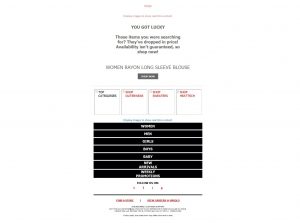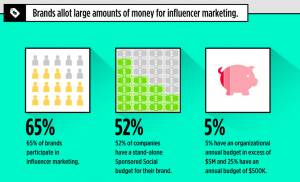— June 19, 2019
The social media landscape continues to adapt to the world around us, with businesses needing to keep up or risk becoming redundant.
As the biggest mover and shaker on the social scene, Instagram is certainly not immune to these shifts, many of which can seem hard to predict and almost impossible to master.
In an effort to stay on top of the game, Instagram is constantly tweaking and refining how they measure and display your content.
The Instagram algorithm is far from opaque, with the platform’s ranking and filing code shrouded in layers of mystery.
While system-wide changes always have an intention, even the smallest adjustments can affect your reach and impact your bottom line.
The basic struggle between fresh and relevant content remains, but the situation has been made a little more complex thanks to the addition of “relationships” as a critical ranking signal.
Let’s take a look at the state of the Instagram algorithm in 2019 and see what you can do to stand out from the crowd.
A little history for context
Now owned by Facebook, Instagram burst into life in 2010 as a small and exclusive iOS service.
While the same basic system has been in place from the outset, many changes have been made along the way.
The original only-square aspect ratio was relaxed in 2015, messaging features and “Stories” were added, and the reverse-chronological order that originally defined the platform was eliminated in 2016.
This was a critical update, with Instagram showing some of their cards by prioritising what users cared about over the latest posts.
Based almost solely on images and video content, Instagram has relied heavily on its algorithm since then to organise and rank its huge and ever-growing masses of content.
This key change highlights the ongoing battle for social media platforms, with people wanting the perfect balance between fresh novel content and relevant personal content.
A delicate balancing act
Recent complaints by Instagram users, and subsequent changes by the platform in 2018, are proof of this delicate balancing act. Among other things, people were annoyed at being automatically bounced to the top of their feed and were also frustrated by seeing the same posts for days on end.
Changes were also made to make it easier for users to see things of interest, with the platform giving a higher ranking to specific posts based on a prediction of relevancy.
Despite their onwards and upwards success, Instagram and other social media platforms have been struggling to make sense of the world over the last few years.
Much of this confusion relates to the tension between what is “new” and what “matters”, with the “interaction” between people valued more and more as a relationship signal.
Just like the changes made by Facebook in 2018, “relationships” have become the critical third factor that attempts to break the deadlock between novelty and value.
In many ways, Instagram and other social media platforms are getting back to where they began, by focusing on the connections that exist between people and the content they engage with every day.
While it’s still crucial for businesses to post new content that’s relevant and adds value, it’s equally important to think about relationships by posting interactive content and creating networks among people that grow and evolve over time.

Where we’re at in 2019
Instagram has continued to grow beyond the wildest imaginations of its two founders. While the struggle at the outset is the same basic struggle as today, the situation has become more complex as the user base continues to grow and become more self-aware.
While businesses often complain about continual updates and changes, efforts by businesses to hack or outsmart the algorithm are what’s responsible for many of the changes in the first place.
In 2019, Instagram has initiated measures to support vulnerable people who use the platform, introduced Instagram Checkout, and put more focus on “Stories” and other features that support relationships. @shop was also started to support small businesses and solo creators, and a newly designed navigation bar was added to “Explore” to aid the discovery process.
In terms of the algorithm itself, perhaps the last word should be left to Instagram, in this telling post from the end of January, 2019:
What shows up first in your feed is determined by what posts and accounts you engage with the most, as well as other contributing factors such as the timeliness of posts, how often you use Instagram, how many people you follow, etc.
As things stand in 2019, Instagram continues to use a number of individual ranking signals in its eternal quest to find the perfect balance between novelty, relevance, and relationships. While the actual Instagram algorithm will never be known by the general public, these three abstract signals provide both an insightful summary and a practical system for businesses who want to get ahead of the curve.
1. Novelty
People have and always will love what is fresh, new, and different from (June 26, 2019). Instagram knows this more than anyone else, with their currency of images and videos going stale much faster than the text content that defines other platforms.
As a business in 2019, you need to be aware of “recency” by posting more often than the competition. Frequency is not the only factor, however. You also need to engage your market by posting content while your audience is online. Frequency of use is essential, so you need to give your audience a reason to open the app and engage with your brand.
2. Relevance
People have and always will love what they know, care about, and are interested in. As mentioned, “relevance” can be seen as a counter-point to “recency”, with businesses needing to create valuable content that means something more than being new.
Instagram measures interest by predicting what’s relevant to users based on their past behaviour. While basically the same as how Facebook and YouTube filter content, Instagram also use image recognition software in an effort to guess whether or not your audience will appreciate your posts.
3. Relationships
People have and always will love their friends, family, and relationships. As the most recent, but also the oldest, ranking signal in Instagram’s toolbox, relationships should be front and centre of your social media efforts in 2019.
While Instagram has always been about relationships, the connections that exist between people and people, and people and content, are now valued more acutely and codified more clearly.
The Instagram algorithm prioritises content from accounts that interact with each other. Whether it’s a comment, a notification, or a DM, there is a new focus on friends and family along with novelty and relevance.
While this might seem like bad news for a commercial organisation, as long as you treat your customers and stakeholders like friends and family, you should be more than fine. Instagram wants you to care about your audience by transforming them into a community.

Practical tips in 2019
Frequency and value and not mutually exclusive – You don’t need to post often, you need to post something valuable as often as you can.
Be aware of international timelines – If an Instagram post drops in the middle of the night and no-one sees it, does it really exist?
Improve the quality of your photos – On Instagram, the pretty pictures are the content. Improving image quality is one of the easiest ways to add value.
Don’t forget about Stories – Stories are popular, so why not use them. According to Techcrunch, Instagram Stories now have over 500 million users a day.
Do more with videos and live streaming – While images are great, moving images are better, and live moving images are better still. Even if your Instagram account is primarily based on images, the odd video can add depth to your feed.
Post like a person – Even if you’re a multinational business, you’re probably made up of real flesh and blood human beings. People like people. Post like a person, be personable, and create a community.
Be pro-active and get ahead – While you don’t want to be too pushy, you can create much more interactive conversations by encouraging people to turn on notifications.
Understanding the delicate three-way relationship that defines the Instagram algorithm is absolutely crucial for your success.
In an ideal world, every post and interaction you have on the platform should keep these three factors in mind.
All of these things should work together, so if it feels like something is missing, pause and try again.
Regardless of your business, Instagram marketing should always be based on novel and valuable content – images, videos, and stories that create conversation and build communities around your brand.
Digital & Social Articles on Business 2 Community
(34)
Report Post




